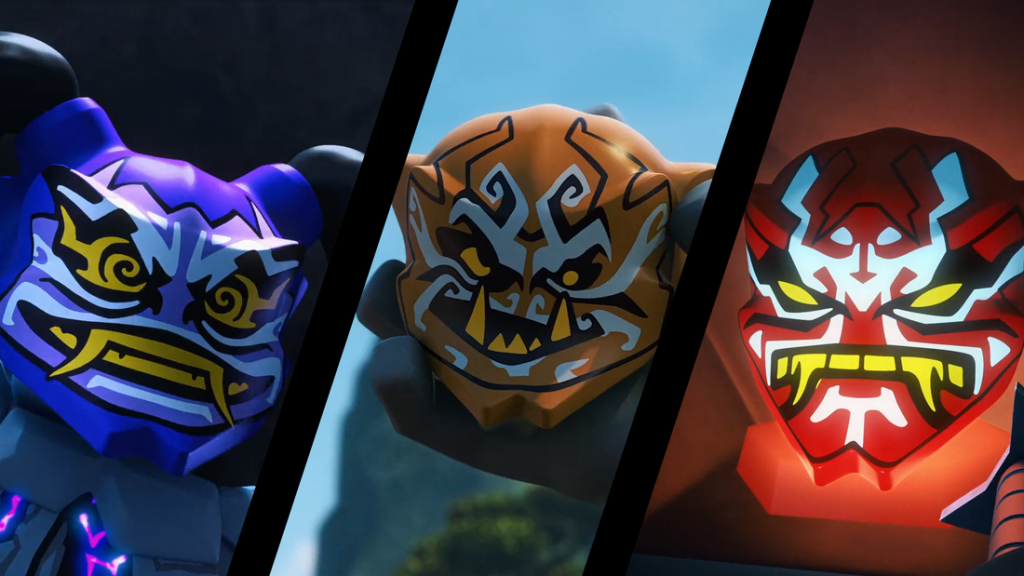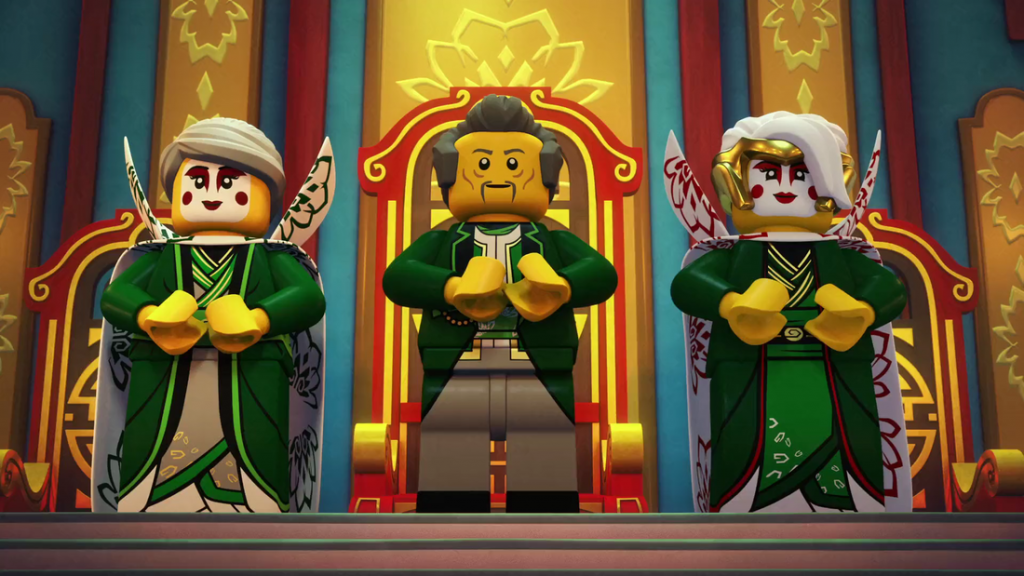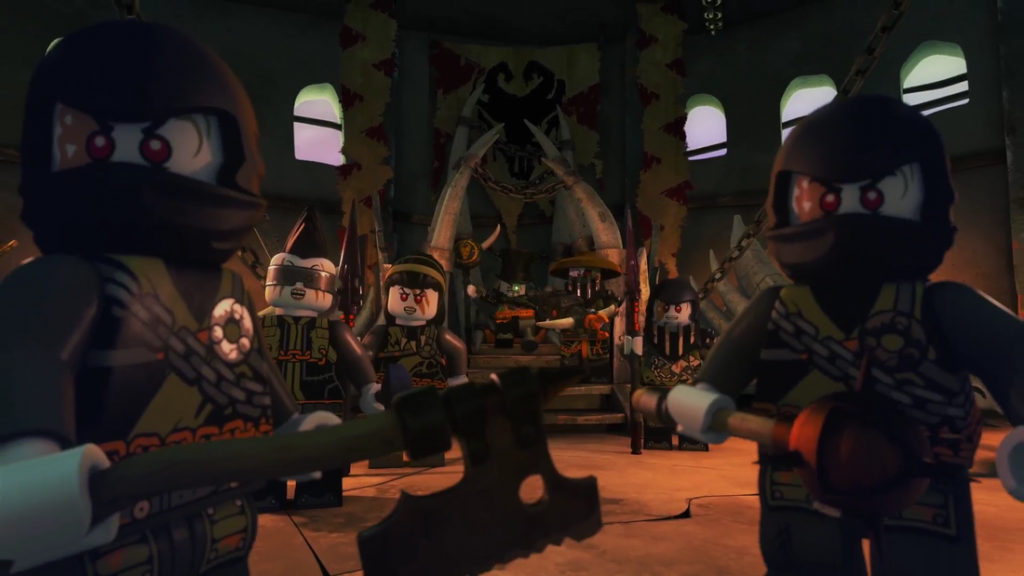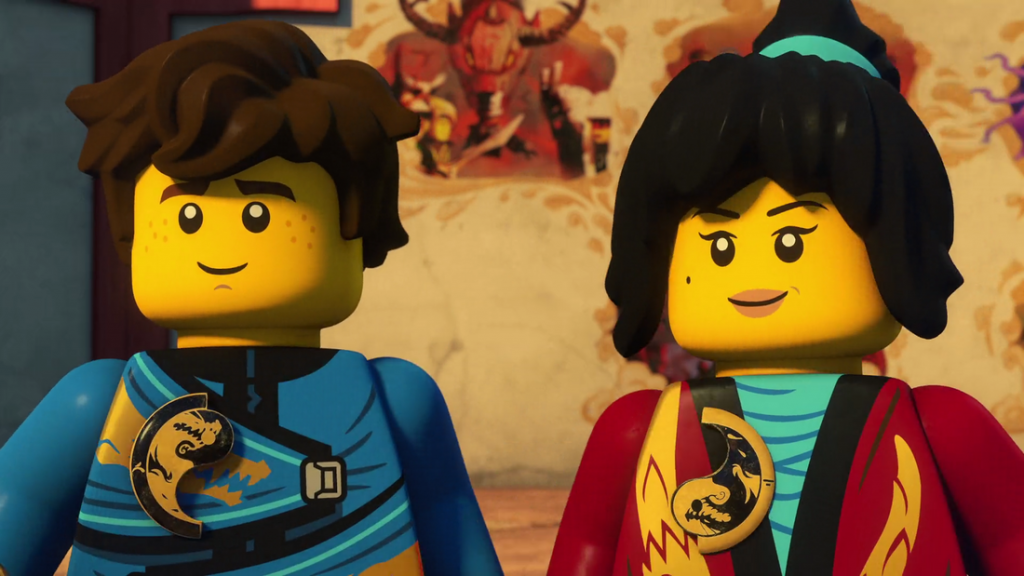The Sons of Garmadon

A percussive melody played on a variety of instruments in 7/8 time, representing the sinister biker gang led by Harumi. The three main notes that comprise this leitmotif are the same as in Lord Garmadon’s theme, referencing the gang’s ties to the King of Shadows.
Harumi

A (usually) innocent-sounding theme played mostly on flute and piano. There are instances, however, where the leitmotif’s instrumentation shifts to strings and percussion and the tone becomes darker. The second (or B) section of Harumi’s theme is sadder, more emblematic of her tragic backstory.
Ancient History

A mysterious and slightly unsettling series of ascending and descending note patterns on strings, which is played during scenes that deal with the story of the First Realm’s primary inhabitants. This leitmotif and the more frequently used Oni leitmotif share a note pattern, present at the start of this theme in a ‘brighter’ tone. More recently, it has been used several times during scenes dealing with history not necessarily relating to Oni and Dragon lore, so it may be becoming more of a leitmotif for history in general.
The Oni

The first and more frequently used leitmotif representing the primordial demons of the First Realm is subdued yet intense, played on plucked strings with backing plucked and bowed low strings. The note pattern was made as an inversion of the ninjago theme due to the Oni’s connection to the place’s creation with the First Spinjitzu Master’s lineage. It is utilized during the first two installments of the Oni Trilogy to build up the Oni’s presence along with foreshadowing their appearance in March of the Oni. The second leitmotif is louder and more aggressive, incorporating chanting and unusual percussion, and is used during the appearance of Oni on-screen.
The Oni Masks

An aggressive leitmotif played on low strings with backing percussion, representing the three Oni Masks. Like the Oni & Dragon History leitmotif, this theme seems to incorporate the Oni leitmotif’s main note pattern.
The Royal Family

A majestic plucked and bowed string piece that plays to represent the Royal Family of Ninjago. It utilizes the pentatonic scale, like the Ninjago Overture. However, this theme is only used in “The Mask of Deception” and possibly “The Jade Princess” (episodes 1 and 2), since the events of “The Jade Princess” leave the Royal Family dead save for Harumi.
Dragons (First Realm)

A noble melody played mainly on horns or low strings, representing the Dragons of the First Realm. This theme bears similarity to the original Dragon leitmotif introduced in the pilots, most prominently in the instrumentation choices and the three-note ascending pattern, but the newer leitmotif is slightly longer and has more variations (most instances of the original Dragon leitmotif came from a single track). This new leitmotif is a prelude to/extended version of the original leitmotif, played near the climax, to exemplify the additional backstory behind the Dragons. Additionally, like the Oni leitmotif, this also ties back to the Ninjago theme, with the end of the new melody being almost identical to the “turnaround section” from Ninjago’s melody.
Iron Baron

This melody, played mainly on strings and representing the leader of the Dragon Hunters, is scheming and ominous in most parts but relatively docile in others. The main tone seems to be decided by the situation it’s used in. For example, during chase sequences the more aggressive sections of his theme play out loudly and percussively, while in other, less tense situations it is quiet.
The Dragon Hunters

A fast and furious series of descending glissandos on strings backed by tense percussion and occasionally war horns, representing the fierce Dragon Hunters. The techniques used in the melody seem to be evoking the ‘vrooming’ and of the Dragon Hunters’ machinery. This leitmotif is mainly used in action sequences between the Hunters and the ninja, and is often accompanied by Iron Baron’s leitmotif.
Faith

A short, hopeful melody on flute and strings. It mainly represents Faith, the second-in-command of the Dragon Hunters, but there are at least two instances of the leitmotif being used to represent the broader theme of ‘having faith’ throughout the season. The ending phrase of the theme is identical to the royal family’s, which is a remnant of it being a scrapped Harumi theme.
The Resistance

The unceasing Resistance is represented by this uplifting leitmotif. Interestingly, it is composed of two, usually intertwining melodies; a repeating four-note pattern on strings for resilience and enduring hardships, and a seven-note pattern on horns (or sometimes strings) for rising up. This leitmotif will often be combined with other leitmotifs, such as the Overture or the Green Ninja leitmotif.
Yin-Yang Promise

A short theme on flute that represents Jay and Nya’s Yin-Yang promise subplot in March of the Oni. It also makes appearances in Master of the Mountain on strings (in the Munce Cave), and in Seabound on duduk during Nya’s goodbye.
